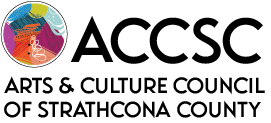Have you ever wondered what the food you eat everyday can tell you about where you come from?
Have you ever wondered why people from different parts of the eat different types of food? Do you ever ask yourself why certain foods or culinary traditions are so important to your culture? There is more of a connection between food and culture than you may think.
On an individual level, we grow up eating the food of our cultures. It becomes a part of who each of us are. Many of us associate food from our childhood with warm feelings and good memories and it ties us to our families, holding a special and personal value for us. Food from our family often becomes the comfort food we seek as adults in times of frustration and stress.
When I was sick as a kid, I couldn’t eat rice because I was too weak, so my.png) mother would cook soup and bring it to bed for me. The smell and taste of the soup became something very familiar to me. Now, whenever I feel tired or stressed, I remember the soup my mom used to make for me and I feel hungry for that soup.
mother would cook soup and bring it to bed for me. The smell and taste of the soup became something very familiar to me. Now, whenever I feel tired or stressed, I remember the soup my mom used to make for me and I feel hungry for that soup.
On a larger scale, food is an important part of culture. Traditional cuisine is passed down from one generation to the next. It also operates as an expression of cultural identity. Immigrants bring the food of their countries with them wherever they go and cooking traditional food is a way of preserving their culture when they move to new places.
Continuing to make food from their culture for family meals is a symbol of pride for their ethnicity and a means of coping with homesickness. Many open their own restaurants and serve traditional dishes. However, the food does not remain exactly the same. For example, some ingredients needed to make traditional dishes may not be readily available, so the taste and flavor can be different from the taste and flavor of the dishes that they would prepare in their home countries.
.png) Additionally, when immigrants sell food in another country, they do not only sell it to people from the same countries as them, but to people from different countries. Therefore, they have to alter the original dishes to cater to a wider range of customers with distinct tastes and flavor preferences. Alterations to original dishes can create new flavors that still retain the cultural significance of the dish.
Additionally, when immigrants sell food in another country, they do not only sell it to people from the same countries as them, but to people from different countries. Therefore, they have to alter the original dishes to cater to a wider range of customers with distinct tastes and flavor preferences. Alterations to original dishes can create new flavors that still retain the cultural significance of the dish.
What stays the same though is the extent to which each country or community’s unique cuisine can reflect its unique history, lifestyle, values, and beliefs.
In China, harmony is a vital trait in almost every aspect of life. This is reflected in Chinese cuisine, where almost every flavor (salty, spicy, sour, sweet, and bitter) is used in a balanced way creating delicious dishes with flavors that go well together.
Historically, Chinese people have an ornate style, which can be seen in.png) their architecture and costumes, as well as in their food. They believe that food not only needs to be nutritious but also needs to look appealing, so they put a lot of effort into decorating the dishes and making them look colorful, with vibrant red as their traditional color.
their architecture and costumes, as well as in their food. They believe that food not only needs to be nutritious but also needs to look appealing, so they put a lot of effort into decorating the dishes and making them look colorful, with vibrant red as their traditional color.
The cuisine of North America reflects its history. The European colonization of the Americas yielded the introduction of European ingredients and cooking styles. Later in the 20th century, the influx of immigrants from many foreign nations developed a rich diversity in food preparation throughout the country.
As the world becomes more globalized, it is easier to access cuisines from different cultures.
We should embrace our heritage through our culture’s food but we should also become more informed about other cultures by trying their foods. It’s important to remember that each dish has a special place in the culture to which it belongs, and is special to those who prepare it. Food is a portal into culture, and it should be treated as such.
Inspired by and edited from original article by Chau B Le, freelymagazine,
https://freelymagazine.com

